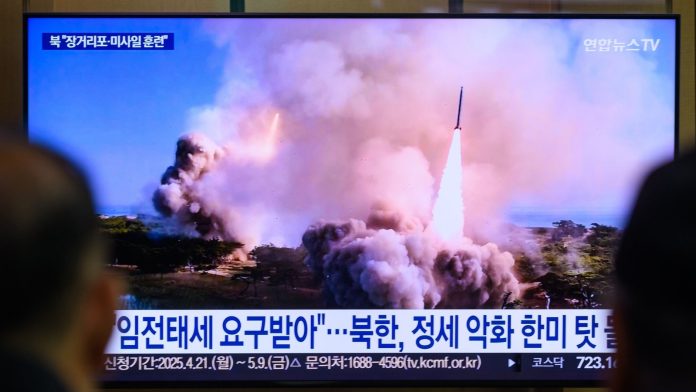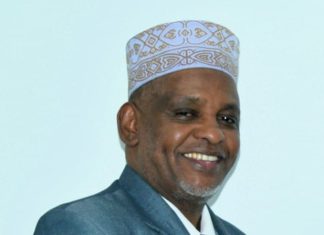
Inside North Korea’s Shadow Arsenal: The Secret Missile Base Near China
In the remote stretches of North Pyongan Province, just shy of 30 kilometers from the Chinese border, a secret military compound quietly hums with activity few outside the highest echelons of global intelligence have known about—until now.
Welcome to Sinpung-dong, a clandestine missile operating base unveiled in startling detail by the Washington-based Center for Strategic and International Studies (CSIS). The facility is believed to conceal some of Pyongyang’s deadliest weapons: six to nine nuclear-capable intercontinental ballistic missiles (ICBMs). These missiles aren’t just toys of intimidation; they symbolize a highly sophisticated, expanding nuclear program that poses a looming threat from Seoul to Washington and beyond.
A Shadow on the Borderland
Imagine a landscape dotted with hidden missile silos, sprawling underground bunkers built with cold precision, and launchers poised for deployment—all tucked in a remote corner where rugged hills meet the uncertain boundary with China. From the air, Sinpung-dong appears as a labyrinth of roads and camouflaged facilities, masterfully concealed from satellite reconnaissance for years.
“What makes this base particularly alarming is its proximity to China,” says Dr. Mei Lin, a regional security expert based in Beijing. “It complicates the geopolitical tension, as the cross-border presence forces Beijing to rethink its own security calculus.”
The existence of Sinpung-dong breaks the long-standing facade that North Korea’s missile infrastructure is largely static and well-mapped. Instead, it confirms North Korea’s relentless march toward augmenting its nuclear strike capabilities in ways few outside observers fully grasp.
The Heart of Pyongyang’s Nuclear Resolve
Since the ill-fated 2019 Hanoi summit between Kim Jong-un and Donald Trump dissolved in a stalemate, North Korea has accelerated its weapons program with renewed fervor. The Sinpung-dong base is a testament to that determination, spotlighting a network of at least 15 to 20 missile sites that have remained off the official radar.
“This is a pivotal element in what North Korea calls its strategic deterrence,” says Col. Andrew Mitchell (ret.), a former Pentagon analyst who has tracked Pyongyang’s missile development for over a decade. “They’re not just stockpiling missiles—they’re strategizing how to deploy them flexibly and survivably.”
Such mobility and secrecy increase the challenge for intelligence agencies. The CSIS report notes the likelihood that launchers could “leave the base in times of crisis,” linking with special units that enable launches from unpredictable locations—making them harder to detect and preempt.
It’s a chilling reminder that Pyongyang’s military architects are shaping a ballistic missile strategy that draws on innovation and stealth, turning the Korean Peninsula into a precarious chessboard with global stakes.
When Diplomacy Fails: The Nuclear Program’s Unyielding March
For years, the world has watched tense negotiations dance around denuclearization. Yet Sinpung-dong’s emergence exposes a blunt truth: some sites and capabilities remain untouched by diplomatic accords. This base has never been part of any denuclearization talks spun between the U.S. and North Korea, deepening the challenge for bridge-building.
“It’s a stark example of why diplomatic talks falter,” reflects Professor Hana Kim, an international relations scholar who has studied North Korea’s strategic culture. “From Pyongyang’s point of view, these nuclear arms aren’t bargaining chips but the bedrock of regime survival.”
Since that 2019 summit’s collapse, Kim Jong-un has unequivocally doubled down on his nuclear ambitions. His recent call for “rapid expansion” of the program is both a signal to the international community and an internal rallying cry—cementing the country’s identity as an “irreversible” nuclear power.
A New Axis: North Korea, Russia, and the Echoes of Conflict
Sinpung-dong’s unveiling comes as the geopolitical environment around North Korea shifts dramatically, shaped by Moscow’s invasion of Ukraine. In a surprising and worrying development, intelligence reveals North Korea has dispatched over 10,000 troops to support Russia’s military efforts, particularly near the Kursk region.
Alongside soldiers, Pyongyang has sent artillery shells, missiles, and long-range rocket systems—a chilling cargo that underscores the regime’s rising role in international military tinderboxes.
“This partnership is a dark dance between isolated and sanctioned states,” explains Dr. Liam O’Connor, a defense analyst in London. “Russia gains manpower and military support; North Korea receives technology and political cover. It’s a transactional relationship that destabilizes security far beyond their borders.”
Adding fuel to the fire, the U.S. reports indicate Russian aid to North Korea may include sophisticated assistance in space and satellite technologies—fields closely tied to missile delivery systems. This exchange hints at an eerie convergence of space exploration and nuclear strike capabilities, a dual-use technology that blurs the lines of international treaties and escalates the arms race.
The Human Dimension: Living in the Shadow of Missiles
Closer to the border, villages in North Pyongan live quietly under the veil of secrecy. Residents are aware, in hushed tones, of the weapons nearby but speak cautiously. Ji-Hoon, a local shop owner, shares, “We don’t speak openly about what goes on beyond the hills. There is fear, but also a strange acceptance. This land is both protector and prison.”
Meanwhile, across the border in China’s Hunchun city, traders watch the border anxiously. “We see military vehicles move, but details are scarce,” notes Chen Wei, a market vendor. “Tensions here affect us deeply. It’s like living with a ticking clock we can’t hear.”
Reflections on a Precarious Future
Sinpung-dong is more than a military installation; it is a symbol of an unstable region where old hostilities, global power plays, and technological evolution converge dangerously.
As you read this, consider: How do nations balance deterrence and diplomacy in a world where secret bases like Sinpung-dong exist? What responsibilities do global powers have to address security risks beyond mere sanctions and speeches? And how do the quiet lives of those living near these sites find space for hope amid the looming threat of war?
In the face of such opacity, the call for more transparency, dialogue, and creative conflict resolution resounds louder than ever. For now, Sinpung-dong remains cloaked, a silent sentinel on a volatile border—an embodiment of fears that nuclear weapons may yet redraw the map of peace and war in the 21st century.
Key Takeaways
- Sinpung-dong is a newly confirmed, secret North Korean missile base near the Chinese border, housing up to nine ICBMs.
- The base is part of a broader network of undeclared missile facilities, revealing sophisticated, mobile nuclear capabilities.
- North Korea’s nuclear ambitions have intensified since the breakdown of U.S.-DPRK talks in 2019, with Kim Jong-un vowing expansion.
- Growing ties with Russia, including military support and technology exchanges, increase regional and global security concerns.
- The base heightens the complexity of denuclearization negotiations and underscores the precarious balance on the Korean Peninsula.









